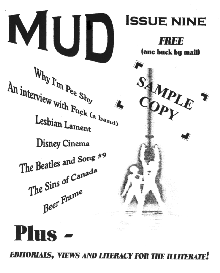When I first got my HDTV a few years ago, a friend immediately remarked to me that once I experienced it, I’d never be able to go back. He was right. We subscribe to cable at my house mostly because of my depressing dedication to Buffalo sports. Yet, rare is the chance that I get to watch a Sabres game in real HD and each time I get the pixilated 4:3 ratio flowing through the coaxial, I’m reminded of how I pay too much for mediocre cable. I mention this because since I’ve found myself increasingly working within Web 2.0, I have also come to expect to see it wherever I go. If I visit a site that regularly updates content and doesn’t have an RSS now, I’m puzzled. If an add-on didn’t update for the newest version of Firefox, I’m crushed. If I can’t share an article or aggregate data across platforms with the click or two of the mouse, I’m peeved. For all the love Flickr gets these days, for example, I’m amazed at how difficult it is to integrate it with Facebook. And yet there’s such cheer in these four articles. Web 2.0 knows no bounds (O’Reilly), supports proactive mapping in communities (Diehl et al), allows workers to repurpose and collaborate (Stolley), and can help elect the president of the free world (Harfoush).
While each of these texts presented their own slight utopias, I was most interested in “Grassroots: Supporting the Knowledge Work of Everyday Life,” since it seemed to best represent the potential of how Web 2.0 can help everyday folks re-purpose the familiar (and hegemonic) to move from consumers of knowledge to producers of knowledge. Plus, I just love maps.
The authors explain how they exploited Google’s API in order to help communities in Lansing, MI map their community assets – buildings, people, historical spaces, or eateries, etc. They choose maps specifically, it seems, because of their ability to present themselves as neutral entities. To those outside of geography departments, maps are usually not seen as arguments (i.e. “it’s just a bird’s eye view”), and so moving community members from readers of maps to producers of them feels like a revolutionary rhetorical enterprise. Before they make that move, however, they explore what current mapping tools exists for communities.
Specifically, they explore Public Participation Geographic Information Systems (PPGIS) tools, which, they argue, are limited because of “public participation may still be stifled by expert-centered interface designs” (419). A good example of such a PPGIS in Syracuse is this site: http://www.mapsonline.net/syracuse/. From what I can gather, it was created by folks at the Maxwell School using open source code from PeopleGIS, a company in Massachusetts. It allows users to visually interact with a sea of data within Onondaga County. Users can plot certain services (child care centers and schools), designated sites (Superfund or food pantries) bus routes, public spaces, but also certain demographic data, such as population, age, income, etc. While the site is a little overwhelming and counterintuitive, it can be powerful to those who (a) know it exists and (b) can navigate its interface and (c) can use the information in specific ways (as knowledge workers).
I’m not sure what went into planning this site, but I see echoes here of what Diehl, et al. reported finding in Lansing. There, the authors identify a site supported by local and federal governments called ArcMIS, which community members found difficult to navigate and use. And while this map in Syracuse doesn’t highlight deficits (crime, for example, isn’t map-able), it doesn’t allow citizens to really participate, to remix it, in any way. Plus, judging from the site’s dead links, it’s outdated and hardly used. I think this is one of the fundamental problems with Web 1.0 – maintenance. I imagine Maxwell received a hefty grant to launch this site and now it sits dormant.
While I realize Web 2.0 doesn’t entirely solve the maintenance problem (I’m thinking of how moderators had to tenaciously monitor posts on MyBo sites), I love that Grassroots provides users with a writing tool – not a read-only site like ArcMIS or the Onondaga County site. By encouraging users to build their own maps using an interface with which they might already be familiar – Google Maps – Grassroots develops a sustainable process that has users creating texts “that can be easily syndicated, repurposed, or added upon” (424). I’ll be curious to see where Grassroots heads in the future. The site is still in Beta test mode, but it has me wanting to do a little walking tour of my own neighborhood soon.

